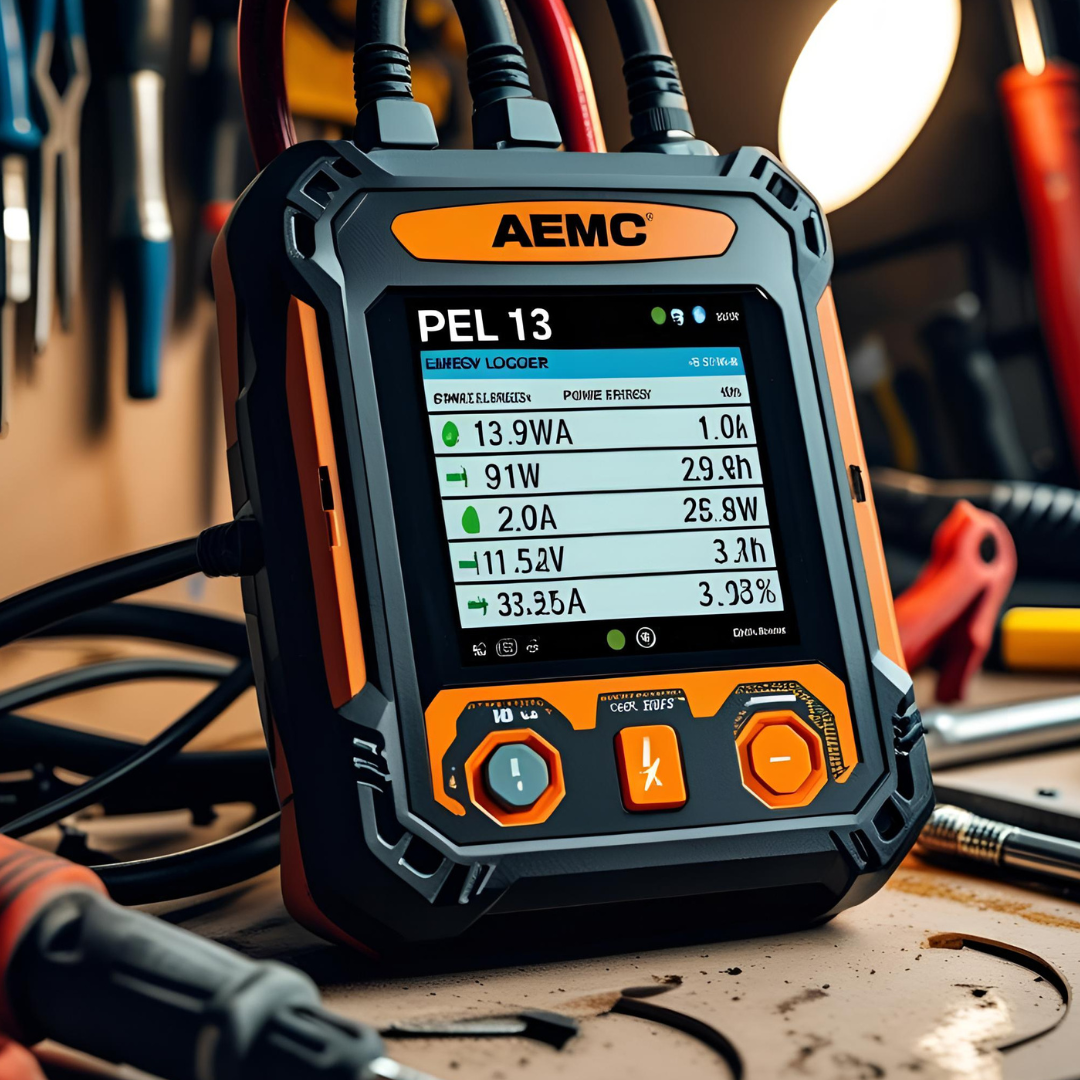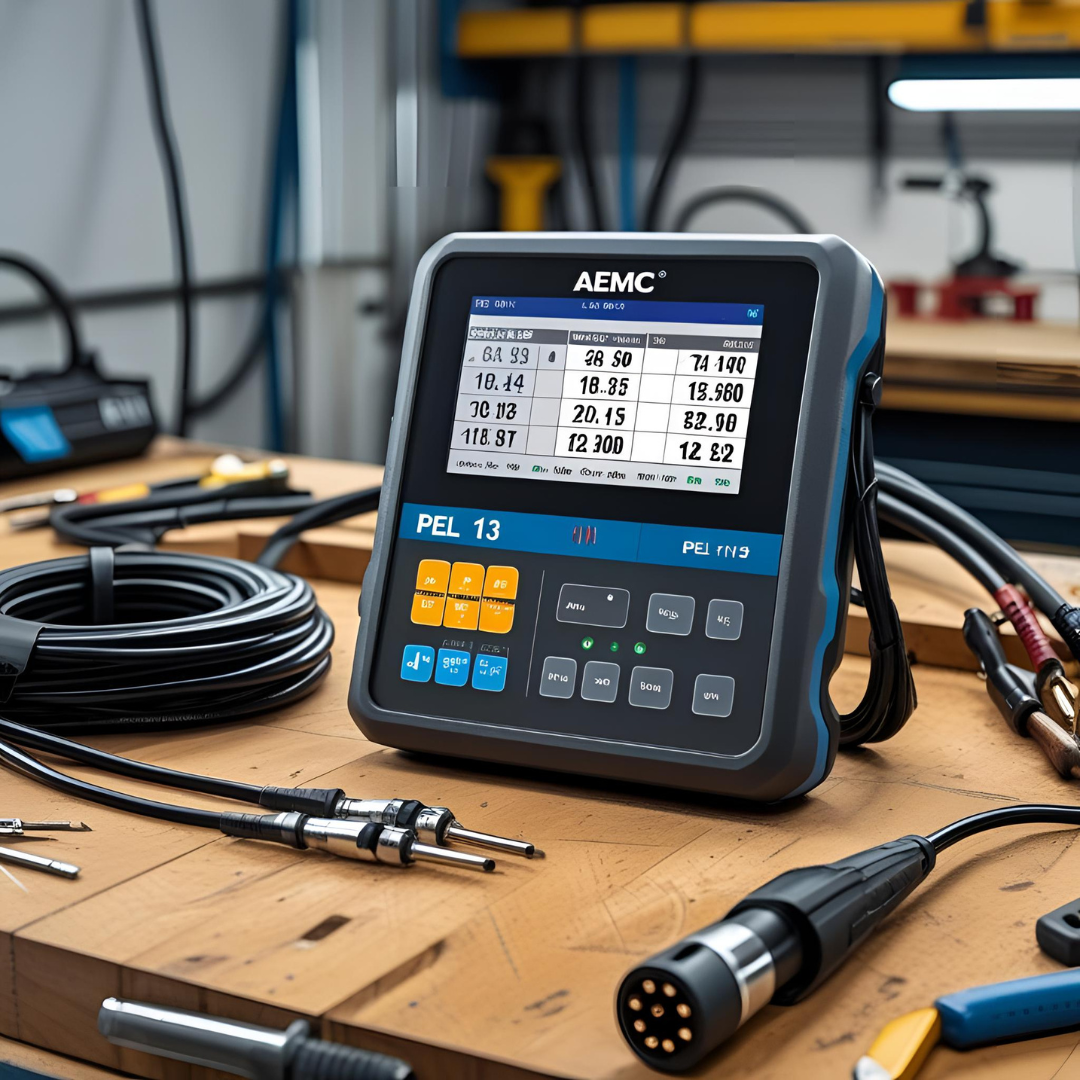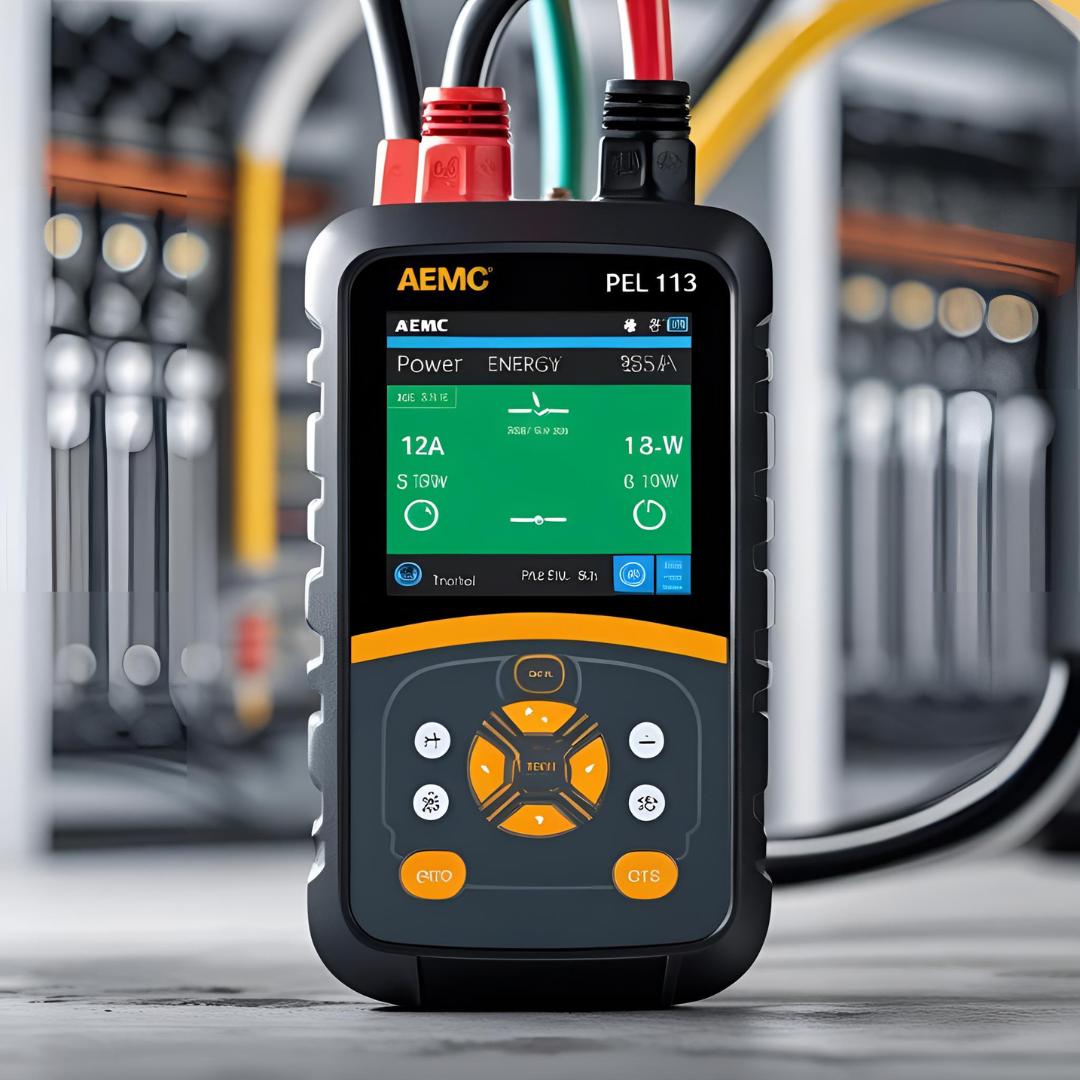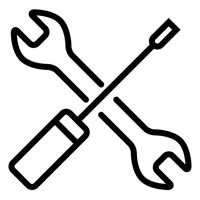Unlocking Energy Efficiency: How to Use a Power Quality Analyser to Identify Cost Savings in Power Systems
Author: James Osborne Date Posted:10 May 2025
Featuring the AEMC PEL 113 Power and Energy Logger

Table of Contents
- Introduction: The Rising Cost of Power
- What is a Power Quality Analyser?
- The Role of Power Quality in Energy Efficiency
- Introducing the AEMC PEL 113: Features and Capabilities
- How the PEL 113 Helps Identify Cost-Saving Opportunities
- Real-World Use Cases and Applications
- Step-by-Step Guide: Using the AEMC PEL 113
- Common Power Quality Issues Affecting Energy Bills
- Data Analysis for Cost Optimisation
- Preventative Maintenance and Long-Term Savings
- Integration with Energy Management Systems
- Final Thoughts: Maximising ROI with the PEL 113
- Frequently Asked Questions (FAQs)
1. Introduction: The Rising Cost of Power
In today's competitive and environmentally-conscious business landscape, energy efficiency is no longer optional—it's a strategic imperative. Whether you're managing an industrial facility, commercial building, or utility infrastructure, power costs can take a substantial bite out of operating budgets.
One of the most powerful tools for managing energy costs and uncovering hidden savings is the power quality analyser—and when it comes to accuracy, affordability, and portability, few match the AEMC PEL 113 Power and Energy Logger.
2. What is a Power Quality Analyser?
A power quality analyser (PQA) is an advanced diagnostic device designed to measure, record, and analyse various aspects of electrical power. Unlike basic multimeters or clamp meters, a PQA can:
- Log real-time power usage
- Identify harmonics and voltage fluctuations
- Detect imbalances and power factor issues
- Monitor energy consumption over time
These capabilities make PQAs indispensable for cost-saving analysis, troubleshooting, compliance testing, and system optimisation.
3. The Role of Power Quality in Energy Efficiency
Poor power quality directly affects operational costs in numerous ways:
- Inefficient equipment performance (due to voltage sags or surges)
- Excessive wear on motors and electronics
- Penalty charges from utility providers for poor power factor
- Unscheduled downtime from power interruptions
- Increased energy consumption from harmonics and imbalances
By identifying and addressing these issues, organisations can often cut electricity costs by 5–20% or more, depending on the baseline condition of their electrical systems.
4. Introducing the AEMC PEL 113: Features and Capabilities

The AEMC PEL 113 is a three-phase power and energy data logger designed specifically to help facility managers, electricians, and energy consultants uncover energy inefficiencies and verify corrective measures.
Key Features:
- Three-phase and single-phase analysis
- Battery-free operation (powered directly from the circuit)
- Real-time data logging and trend analysis
- Bluetooth, Ethernet, and USB communication
- Remote access and configuration
- Compatible with industry-leading software (DataView®)
Measurement Parameters:
- Voltage (RMS, peak, transients)
- Current (RMS, peak, inrush)
- Power (active, reactive, apparent)
- Energy (kWh, kVARh)
- Power Factor
- Harmonics (up to 50th order)
- Frequency
- These functions allow you to log and analyse energy usage patterns, identify anomalies, and validate energy-saving interventions with confidence.
5. How the PEL 113 Helps Identify Cost-Saving Opportunities
Here’s how the PEL 113 provides direct value in energy cost reduction:
A. Power Factor Correction
A low power factor results in utility surcharges. The PEL 113 measures power factor in real-time, helping you:
- Identify inductive loads (e.g., motors, HVAC)
- Quantify reactive power
- Recommend capacitor bank installations or upgrades
-
B. Load Profiling
Logging power use over time reveals peak demand periods and non-essential load schedules, allowing for:
- Peak shaving strategies
- Load shifting
- Better time-of-use rate utilisation
-
C. Harmonics Detection
Harmonic distortion increases heating in conductors and transformers, leading to inefficiency and higher energy use. The PEL 113 identifies harmonic issues and assists in:
- Sizing harmonic filters
- Redesigning circuits
- Reducing losses in power distribution
-
D. Imbalance and Phase Loss
An unbalanced system can cause overloading in one phase, leading to:
- Excessive power losses
- Equipment damage
- Safety hazards
The PEL 113 quantifies these imbalances to facilitate corrective action.
6. Real-World Use Cases and Applications
The AEMC PEL 113 is used across multiple industries for its flexibility and ease of deployment:
- Industrial Plants – Motor load analysis, VFD impact studies, and harmonics detection
- Commercial Buildings – Sub-metering for departments and tenant billing
- Educational Institutions – Monitoring electrical usage in campuses
- Hospitals – Ensuring reliable power for critical equipment
- Energy Audits – Documenting before-and-after performance for ESCOs
7. Step-by-Step Guide: Using the AEMC PEL 113
Step 1: Plan Your Measurement
- Identify the system (single-phase, split-phase, three-phase)
- Define the logging period (e.g., 1 week, 1 month)
Step 2: Install the Logger
- Use magnetic probes or clamp sensors to attach to conductors
- Connect voltage leads safely
- Configure connection type (e.g., delta, wye)
Step 3: Configure the Logger
- Use DataView® software or Bluetooth for setup
- Choose logging intervals (1 second to 1 hour)
- Set alarms for thresholds
Step 4: Monitor and Log Data
- Leave the logger in place
- Use remote communication to check progress
Step 5: Analyse the Data
- Generate reports
- Compare with historical data
- Identify inefficiencies and recommend changes
8. Common Power Quality Issues Affecting Energy Bills
Let’s explore the main culprits behind inflated power costs that the PEL 113 can help identify:
1. Poor Power Factor
Low power factor means more current for the same power, leading to losses.
2. Harmonics
Excessive harmonics cause overheating and decreased lifespan of devices.
3. Voltage Sags or Swells
Momentary dips or spikes that lead to downtime or poor performance.
4. Load Imbalances
Disproportionate current in phases resulting in reduced efficiency.
5. Phantom Loads
Idle equipment drawing unnecessary power during off-peak hours.
9. Data Analysis for Cost Optimisation

With the logged data from the AEMC PEL 113, you can:
- Generate detailed energy audits
- Benchmark before-and-after upgrades
- Justify investment in power factor correction
- Implement load shedding strategies
- Identify equipment causing harmonic pollution
- Using built-in software like DataView®, users can quickly create visual reports for stakeholders or clients, highlighting measurable cost-saving recommendations.
10. Preventative Maintenance and Long-Term Savings
Monitoring power quality isn’t just about short-term cost savings. It’s also a powerful predictive maintenance tool.
- By spotting anomalies before they become problems, the PEL 113 helps:
- Avoid unplanned outages
- Extend equipment life
- Minimise repair costs
- Reduce safety risks
11. Integration with Energy Management Systems
For larger facilities and utilities, the AEMC PEL 113 can be integrated into broader Energy Management Systems (EMS) or Building Management Systems (BMS) via:
- Modbus TCP/IP
- Ethernet and USB exports
- XML/CSV report compatibility
This integration enables continuous monitoring and the development of AI-driven energy optimisation routines.
12. Final Thoughts: Maximising ROI with the PEL 113
In an era of rising energy prices, climate responsibility, and competitive operational margins, the value of tools like the AEMC PEL 113 cannot be overstated.
By using this compact yet powerful analyser, facilities can:
- Reduce power bills
- Avoid penalty charges
- Improve electrical safety
- Justify energy efficiency investments
Its ease of deployment, remote capabilities, and accurate logging make it the perfect tool for energy auditors, facilities managers, and industrial electricians looking to deliver value and boost the bottom line.
13. Frequently Asked Questions (FAQs)
Q1: How long can the AEMC PEL 113 log data?
It can log continuously for weeks or months depending on memory settings. Logging intervals and overwrite options are configurable.
Q2: Can it be used without interrupting power?
Yes. It’s designed for live installation and does not require a shutdown for deployment.
Q3: What communication options are available?
Bluetooth, USB, and Ethernet are supported, along with remote web browser access.
Q4: Is software included?
Yes. The DataView® software is included for full data configuration, visualization, and report generation.
Q5: Does it support harmonics analysis?
Yes, up to the 50th harmonic order for both current and voltage.
Ready to Save on Energy Costs?
If you're serious about identifying energy savings and improving electrical efficiency, the AEMC PEL 113 Power Quality Analyser is your go-to diagnostic tool.
Visit Testrix Systems to learn more or request a quote for the AEMC PEL 113 today.




